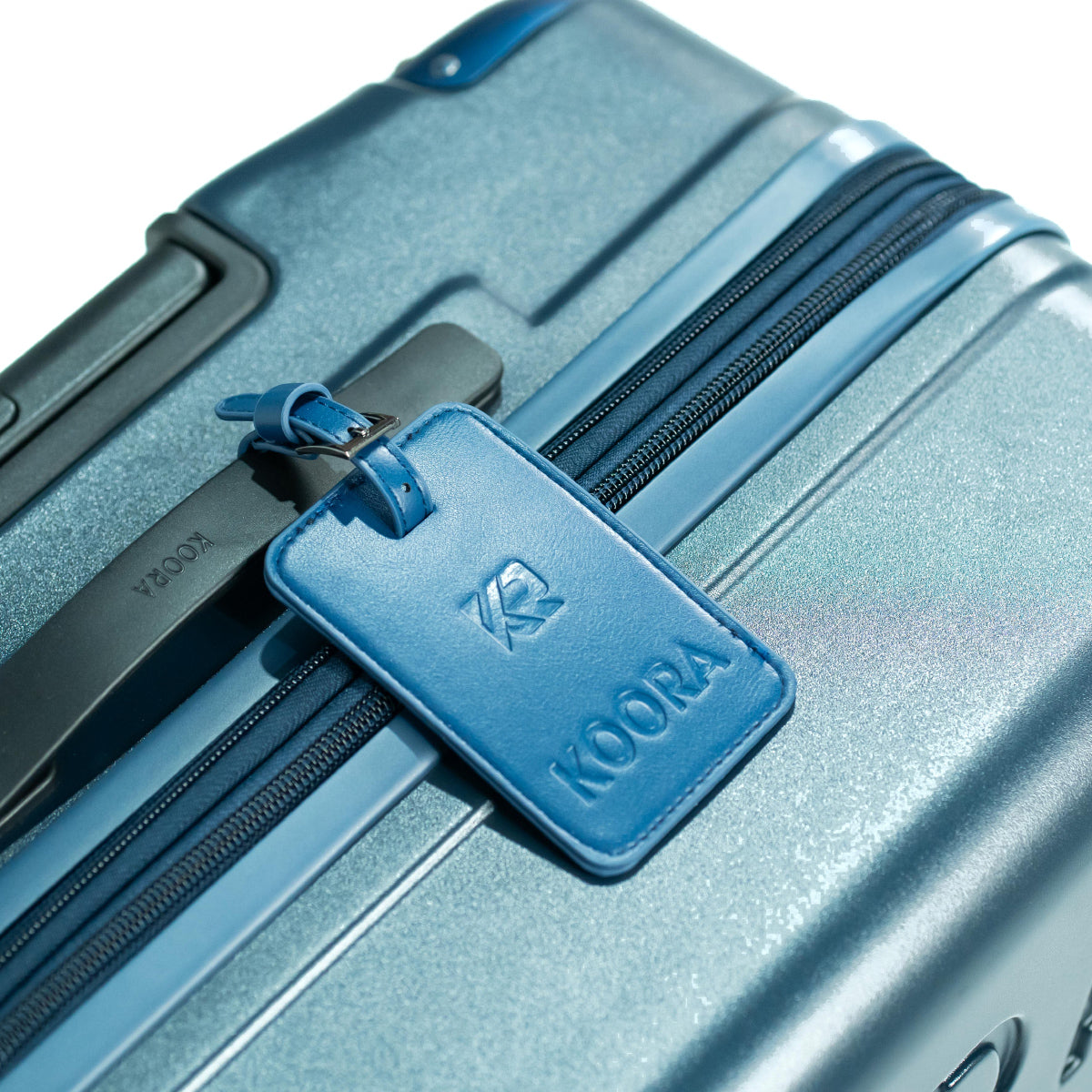
From Waste to Wanderlust: The Lifecycle of Upcycled Luggage
The travel industry is a quiet revolution in a world where sustainability has been escalated, no longer being a want but a need for individuals and the world. Air companies are reconsidering the use of fuel, hotels are going green, and so are luggage manufacturers, who are coming up with products that will not only take care of the travellers' interests but also restrain and not go beyond the capacity of the planet. The central thing about this transformation is a single intriguing idea: upcycled luggage.

Brands are transforming such discarded materials instead of depending on virgin plastics, metals, and textiles as functional, beautiful, and durable travel companions. Built out of fishing nets pulled out of the sea to industrial scraps given a second life, upcycled luggage is showing that waste is no longer the closing to the materials story-it is the opening to a bigger tale.
The Problem: Luggage Waste and Fast Travel Gear
The luggage industry has traditionally used mass production through the use of materials such as virgin polycarbonate, ABS plastic, and nylon. They are long-lasting, admittedly, yet also consume many resources and are difficult to recycle. As soon as one suitcase cracks, a wheel is damaged, or a zipper is jammed, many of the travellers put it in the bin without thinking it can be fixed.
The result? Every year, millions of suitcases, duffels and carry-ons are found in landfills. Luggage is a problematic waste product as opposed to clothing, which has gained traction in thrift stores and textile recycling. When a suitcase is recycled, most recycling systems in municipalities are not set up to help dismantle the mixed materials into incident parts, hence the suitcase is wrong in terms of recycling.
What Is Upcycled Luggage?
Upcycling is more than just recycling—it’s creatively repurposing discarded materials into products of equal or higher quality. In luggage design, this might mean:
-
Fishing nets turned into abrasion-resistant fabric.
-
Ocean plastics reformed into hardshell casings.
-
Seatbelt webbing from retired cars or planes is becoming ultra-strong straps.
-
Factory floor offcuts of leather or canvas stitched into bag panels.
-
Retired billboards and advertising banners transformed into bold, waterproof covers.
By upcycling, manufacturers keep valuable materials out of landfills and reduce the demand for new raw resources. The process also lowers carbon emissions compared to producing luggage from scratch.
The Lifecycle of Upcycled Luggage
The journey from “waste” to “wanderlust” follows several fascinating stages:
1. Material Sourcing
It starts with identifying high-quality waste streams. For ocean-bound plastics, collection initiatives partner with local communities in coastal regions. For industrial waste, manufacturers collaborate with factories to rescue leftover rolls of fabric or scrap polycarbonate before they’re discarded.
2. Cleaning & Processing
The materials that are salvaged are typically required to be scrubbed, sorted and prepared at a deep level. Take crushed up fishing nets as an example, discarded fishing nets being washed, shredded and pressed into pellets to be re-moulded. The fabrics are pre-washed of any dirty work and also fall-out tested in order to ascertain that they fulfil all the international requirements in regard to safety and durability aspects.
3. Redesign & Manufacturing
That is where engineering and creativity meet. Makers take advantage of the irregularities of the materials being upcycled: they may have slightly different colours or textures than the others, but designers support those details and use them to create well-designed luggage that is both very usable and very trendy. They are composed of components to be repaired: wheels that can be easily replaced, handles that are modular, and zippers that are sturdy.
4. Use & Maintenance
They presume that the upcycled suitcase made out of high-quality materials ought to work as well as the top-brand suitcases. Under adequate care--cleaning out after outings, storing in a cool, dry place, and making little repairs in time--it may keep in use half a dozen years or longer.
5. End-of-Life & Re-Upcycling
The true test of sustainability is what happens when the luggage finally reaches the end of its usable life. Ethical brands offer take-back programs, disassembling old products so materials can be reintroduced into the manufacturing cycle.
Why Travellers Are Making the Switch
The contemporary travellers are becoming more environmentally aware. It is no longer a hippie-dippie showoff to own upcycled luggage- it is convenient:
-
Durability: Many upcycled materials, like industrial-grade seatbelts or reclaimed marine plastics, are designed to withstand extreme wear.
-
Uniqueness: Each piece often carries a one-of-a-kind look, with subtle variations that tell the story of its past life.
-
Conversation Starter: Your suitcase becomes part of your travel narrative—imagine telling a fellow traveller that your bag once floated in the Pacific Ocean or shielded a building as a billboard.
Koora’s Role in the Upcycled Travel Movement
At Koora, we do not use the word sustainability as a buzzword, but it is the DNA of a brand. Known as being manufacturers of fashionable luggage, with hard and sleek luggage to withstand less than good handling, Koora will be looking to incorporate upcycled materials into their new range without cutting quality.
Whether it is exploring attractions in the sea through ocean-bound plastic shell applications or using reclaimed aluminium to make the handles of the backpacks, Koora is driven to produce travel gear that is as friendly to the environment as it is reliable inside the baggage carousel. The design aesthetic of the brand is based on long life, since the most eco-friendly suitcase is the one that does not need to be changed every three months.
Koora also advocates for repairability. They assist travellers in ensuring that their luggage does not end up in the landfill by providing spare parts and repair manuals, as well as making it convenient to access service centres.
Challenges in Upcycled Luggage Production
While the idea is exciting, there are real hurdles:
-
Consistency of Supply – Waste streams can be unpredictable. Some months yield plenty of fishing nets; others don’t.
-
Cost of Processing – Cleaning and preparing discarded materials can be more expensive than producing virgin plastics.
-
Consumer Perception – Some travellers still assume “recycled” means “less durable,” even though modern upcycled luggage often meets or exceeds industry standards.
-
Design Limitations – Working with pre-existing materials sometimes limits colour and texture options, requiring more creative problem-solving.
Despite these challenges, the momentum behind upcycled luggage continues to grow, driven by brands willing to innovate and travellers eager to support them.
How to Choose the Right Upcycled Luggage
When you are willing to make the switch, here are a few tips:
-
Insist on Transparency: Try out the brands that explain where they obtain the materials and how they manufacture them.
-
Look at Durability Ratings: See what owners have posted in terms of durability, i.e. how strong the cart is against impact, how waterproof the cart is, and how well the wheels work.
-
Choose Classic Designs: Do not choose styles that are so trendy, as you will not love that suitcase 10 years later.
-
If it is not replaceable, it is not a sustainable piece of luggage.
The Future of Travel, One Suitcase at a Time
The trend towards upcycled luggage has become more than a fad; it is an evolutionary step towards changing the way we consider consumer products. With climate change and resource scarcity being top priorities in this age, buying is a form of voting on which direction we would like to see the future.
The power of choice is strong for travellers: You can travel not only with the bare minimum that you will need on your journey, but also a story of transformation, of how even what was once thrown away and thought of as forgotten can be given new life.



Leave a comment
This site is protected by hCaptcha and the hCaptcha Privacy Policy and Terms of Service apply.